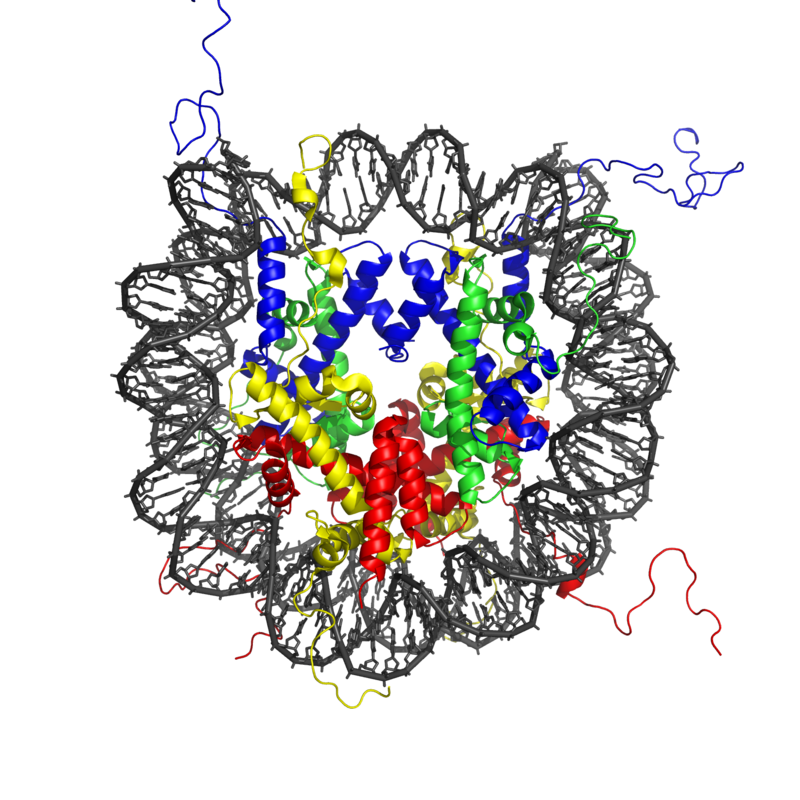At Year’s End: Staff Editors’ Favorite PLOS ONE Articles of 2014
2014 has been an exciting year for PLOS ONE. We saw the journal reach a milestone, publishing its 100,000th article. PLOS ONE also published thousands of new research articles this year, including some ground-breaking discoveries, as well as some unexpected and controversial findings.
All year long, the staff editors at PLOS ONE carefully scan newly submitted manuscripts before they’re sent to our Editorial Board for assessment and scientific peer review. Among the thousands of titles that each PLOS ONE staff editor has seen over the past year, there were bound to be some year-end favorites! We polled the PLOS ONE staff editors and asked them to send along their picks, presented in no particular order.
1. Media Multi-Tasking on the Brain
 Image from article
Image from article
As we increasingly rely on multimedia devices in our personal and professional lives, we may wonder what impact our habits have on our brains. Studies have indicated that media multi-tasking—that is, the concurrent use of multiple media devices—may have a negative impact on a number of cognitive functions, but the neural changes responsible for these declines remain largely unexplored.
Using MRI to explore structural associations with our use of media, the authors of “Higher Media Multi-Tasking Activity Is Associated with Smaller Gray-Matter Density in the Anterior Cingulate Cortex” show that users who frequently engage in media multi-tasking may have a lower density of gray-matter in the anterior cingulate cortex, a region in the brain crucial for a number of higher cognitive processes. While the authors cannot yet state that media multi-tasking causes decreased gray matter, it does make us wonder whether our devices are, quite literally, becoming a substitute for our brains.
2. Improving Zebrafish Care and Welfare in the Lab
 Image from article
Image from article
The use of zebrafish in developmental and biomedical research has increased substantially in recent years. The popularity of this relatively new model species has sparked an interest in assessing—and potentially improving—their welfare in the lab environment. Evaluating the “humaneness” of euthanasia is a critical research aim, since nearly all zebrafish are sacrificed at the end of an experiment.
In “Conditioned Place Avoidance of Zebrafish (Danio rerio) to Three Chemicals Used for Euthanasia and Anaesthesia,” the authors report the results of a behavioral test designed to evaluate and compare the animals’ aversion to three commonly used euthanasia agents: tricaine methanesulfonate (referred to as TMS or “MS-222”), clove oil, and metomidate hydrochloride. The researchers found that zebrafish exposed to TMS spent less time in the side of the experimental tank that they had previously preferred, indicating aversion. Exposure to the other two chemicals did not elicit such a response, leading the authors to conclude that clove oil and metomidate hydrochloride are less aversive to zebrafish and could be pursued as “humane alternatives” to TMS for euthanasia. This finding may play an important role in the updating of guidelines for the care and use of zebrafish in the research setting.
3. Supercentenarian Genomes
 Image from Flickr
Image from Flickr
This paper was picked by two PLOS ONE Editors! Do our genes determine whether we could live to be 110? To answer this question, the authors of “Whole-Genome Sequencing of the World’s Oldest People” sequenced the genomes of 17 supercentenarians and compared their DNA to that of the general population. Despite trying several ways of searching, the researchers did not find any specific genetic variations associated with supercentenarians, but they did generate a unique, publicly available dataset and a useful resource that may help us someday uncover the genetic code for a long life (or else determine that one may not exist)!
4. Paper Microscopes, < $1 each
 Image from article
Image from article
This was another paper that got more than one vote from the PLOS ONE Editors. The Stanford University authors of “Foldscope: Origami-Based Paper Microscope” bring microscopy to the masses with their invention. Fabricated from paper and assembled in 10 minutes using origami folding techniques, the Foldscope comes in at a per unit cost of less than $1 and represents an exciting opportunity to inexpensively fabricate microscopes in bulk. It uses an LED light that provides up to 50 hours of light on a single button battery, making it usable for field applications. The Foldscope may find its way into the hands of students, educators, and scientists worldwide for a wide-range of purposes, including future disease-specific designs for rapid diagnoses in the field.
5. Yeast with Mitochondria, Please!
 Image source
Image source
Anyone who has worked in or near a Drosophila lab will appreciate how much flies love yeast, but not everyone may have guessed the contribution of yeast mitochondria to the flies’ attraction to yeast. Through a genetic screen designed to identify attractive yeast strains, the authors of “Saccharomyces cerevisiae mitochondria are required for optimal attractiveness to Drosophila melanogaster” may have unveiled the importance of yeast mitochondria metabolism for fly attraction and more generally, yeast ecology.
6. Plant Xylem = Water Filter?
 Image from article
Image from article
This study from MIT, published way back in January, held strong as one of our favorites throughout this year. With the problem of waterborne diseases causing up to ~1.8 million deaths annually, “Water Filtration Using Plant Xylem” describes the use of plain old sapwood from coniferous trees as a way to remove bacteria and pressure-filter up to several liters of clean drinking water per person per day. Like the Foldscope mentioned above, this method may be useful for the public, readily available, inexpensive, and to top it off, completely biodegradable and disposable. If implemented, this method may be able to help address the need for clean water in developing countries and areas where resources are otherwise limited.
7. Glial Cells Involved in Schizophrenia
 Image source
Image source
Schizophrenia and biopolar disorder are highly heritable, but the genetic contributions to these disorders are not well understood. In “Pathway Analyses Implicate Glial Cells in Schizophrenia,” the authors used publicly available data from the Psychiatric Genomics Consortium and sought associations between these illnesses and biological pathways (groups of genes), rather than studying single gene associations. Results showed that a glia–oligodendrocyte pathway was associated with both disorders, supporting a model in which genetic factors contribute to white matter abnormalities observed in brains of patients with schizophrenia. This methodological advance may be instrumental in increasing our understanding of multi-genic diseases and disorders that have eluded geneticists for decades.
8. SAFE 2013: Exploring Sexual Harassment in Science
 Image from article
Image from article
In “Survey of Academic Field Experiences (SAFE): Trainees Report Harassment and Assault,” authors detail a self-selected survey of 666 field researchers, where nearly two in three surveyed reported experiencing sexual harassment, and over one in five reported suffering sexual assault. According to the study, women were more likely than men to be subject to harassment or assaults, and unlike men, the women reported receiving abuse more from superiors than from peers. Unfortunately, victims felt they had limited awareness of policies and reporting mechanisms. Published in July, this study has helped open up a conversation about sexual harassment and assault in anthropology and scientific research more broadly, including extensive discussion in media and blogs lasting much long than the usual media cycle for a publication. The study was also quoted by a member of the US Congress. It was one of our most-viewed PLOS ONE articles in 2014, and in the top ten by social shares—the most tweeted PLOS ONE article this year—and has 79 media links so far.
9. Disease-Fighting Drugs in Sloth Hair
 Image source
Image source
As legend has it, penicillin was discovered when an unwelcome fungus floated through an open window, landed in a petri dish, and blocked the growth of bacteria. If this serendipitous event could transform modern medicine, what is the potential of the over 5 million fungal species that have yet to be characterized? In “Sloth Hair as a Novel Source of Fungi with Potent Anti-Parasitic, Anti-Cancer and Anti-Bacterial Bioactivity,” the authors visited the microbe-rich tropics of Central America and offered nine wily three-fingered sloths a free haircut. The hair samples yielded dozens of novel fungal strains, many of which displayed activity against bacteria, parasites, and cancer cells. These findings may provide leads for drug development and underscore the untapped potential hiding in microbial biological diversity.
10. New Caledonians Continue to Amaze Us
The videos for this paper are amazing, and we weren’t the only ones that thought so! The video above was by far our most popular on our Youtube channel this year. In “Using the Aesop’s Fable Paradigm to Investigate Causal Understanding of Water Displacement by New Caledonian Crows,” the authors employ the established Aesop’s Fable paradigm to show that New Caledonian crows are able to causally understand water displacement, similar to the understanding in a 5-7 year-old child. A few months later, the authors published a second study with us on the same topic.
11. Chickens Walking Like Dinosaurs
Although birds are direct descendants of theropod dinosaurs, they cannot be used confidently to gain insights into certain aspects of dinosaur biology because their bodies have changed so much over the course of evolution. In an effort to explore chickens as a model for dinosaur locomotion, the authors of “Walking Like Dinosaurs: Chickens with Artificial Tails Provide Clues about Non-Avian Theropod Locomotion” attached an artificial tail to two-day-old chicks to substitute for the bony tail of dinosaurs that was lost to evolution. As adults, the chickens exhibited a displaced center of mass, and changes in limb posture and range of motion, creating a potential model for investigating dinosaur locomotion mechanics and energetics.
12. Working Together, Not Against: The Tale of H4K16ac and ISWI
 Image source
Image source
Histone proteins, assembled into a nucleosome structure, are essential for compacting DNA into tiny nuclei inside eukaryotic (membrane-bound) cells. However, access to specific regions of DNA is necessary during a cell’s lifetime, and chromatin remodelers such as ISWI, alongside chemical modifications to the histones, such as acetylation of Lysine 16 on Histone (H4K16ac), can help unravel the DNA. Somewhat paradoxically, evidence seems to suggest that H4K16ac actually works against ISWI and inhibits it. As all evidence indicating that H4K16ac inhibits ISWI was performed using peptides or arrays containing just one nucleosome, the authors of “ISWI Remodelling of Physiological Chromatin Fibres Acetylated at Lysine 16 of Histone H4” decided to approach the puzzling question using nucleosomes arrays made of 25 nucleosomes to more closely mimic the chromosome. Using this system, researchers showed that H4K16ac did not in fact stop ISWI in its remodeling capabilities as previously thought, putting the conundrum to rest.
13. How Available are the Results of Clinical Trials?
 Image source
Image source
Clinical trial reporting and transparency is an important editorial issue that we at PLOS support. In “How Frequently Do the Results from Completed US Clinical Trials Enter the Public Domain? – A Statistical Analysis of the Clinicaltrials.Gov Database,” the authors analyzed data from 400 randomly selected clinical trials registered in the ClinicalTrials.gov (CTG) database and found that almost one third had failed to achieve public disclosure of results within 4 years of completion, either by publishing the primary outcomes in a peer-reviewed journal, or posting the results to the CTG database.
Studies were less likely to publicly disclose the results if i) they were a phase 2 versus a phase 3/4 clinical trial, ii) if the sample size was small, or iii) if the study design involved randomization. These findings broadly support previous studies of clinical trial reporting, including a PLOS ONE study in 2013 by Huser et al.
There you have it! A diverse selection of papers that we hope gives you a taste of the scope and breadth of research published in PLOS ONE. Here’s to another huge round of exciting research in 2015!
Happy New Year!
The PLOS ONE Staff Editors
Damian Pattinson, Iratxe Puebla, Catriona MacCallum, Meghan Byrne, Michelle Dohm, Matt Hodgkinson, Eric Martens, Adrian Aldcroft, Gina Alvino, Sarah Bangs, Christna Chap, Eileen Clancy, Alejandra Clark, Renee Hoch, Jessica Rozek, Nicola Stead, and Edward Sucksmith
